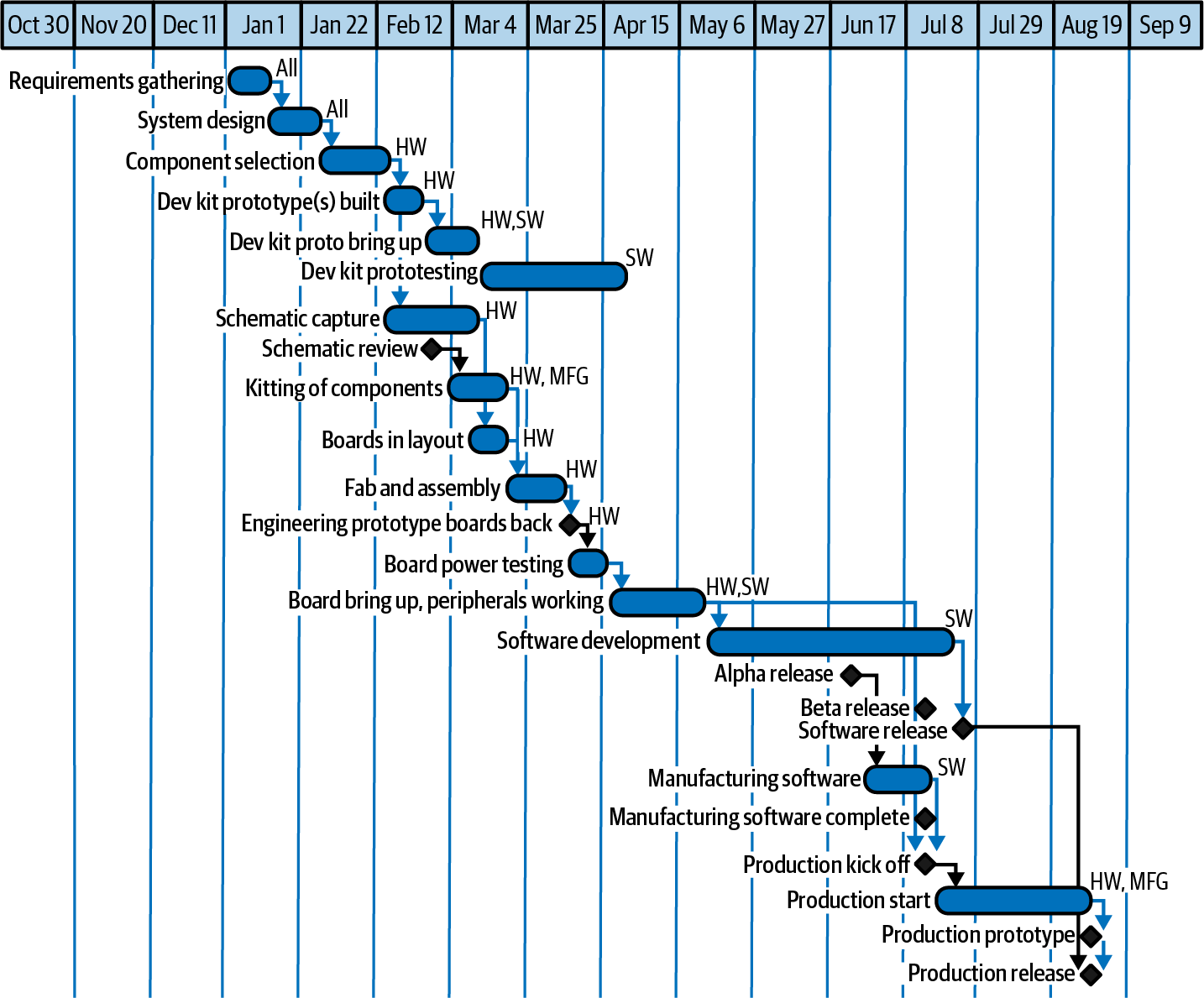Chapter 3. Getting Your Hands on the Hardware
It can be tough to start working with embedded systems. Most software engineers need a crash course in electrical engineering, and most electrical engineers need a crash course in software design. Working closely with a member of the opposite discipline will make getting into embedded systems much easier. Some of my best friends are electrical engineers.
If you’ve never been through a development cycle that includes hardware, it can be a bit daunting to try to intuit your roles and responsibilities. In this chapter, I’ll start out with an overview of how a project usually flows. Then I’ll give you some more detailed advice on the skills you need to hold up your end of the team, including:
-
Reading a datasheet
-
Getting to know a new processor
-
Unraveling a schematic
-
Creating your own debugging toolbox
-
Testing the hardware (and software)
Hardware/Software Integration
The product starts out as an idea or a need to be filled. Someone makes a high-level product design based on features, cost, and time to market. At this point, a schedule is usually created to show the major milestones and activities (see Figure 3-1).

Figure 3-1. Ideal project schedule example
Ideal Project Flow
This sort of schedule is based on the engineering managers (or tech leads) talking about the goals and then estimating the time and resources the project ...
Get Making Embedded Systems, 2nd Edition now with the O’Reilly learning platform.
O’Reilly members experience books, live events, courses curated by job role, and more from O’Reilly and nearly 200 top publishers.

